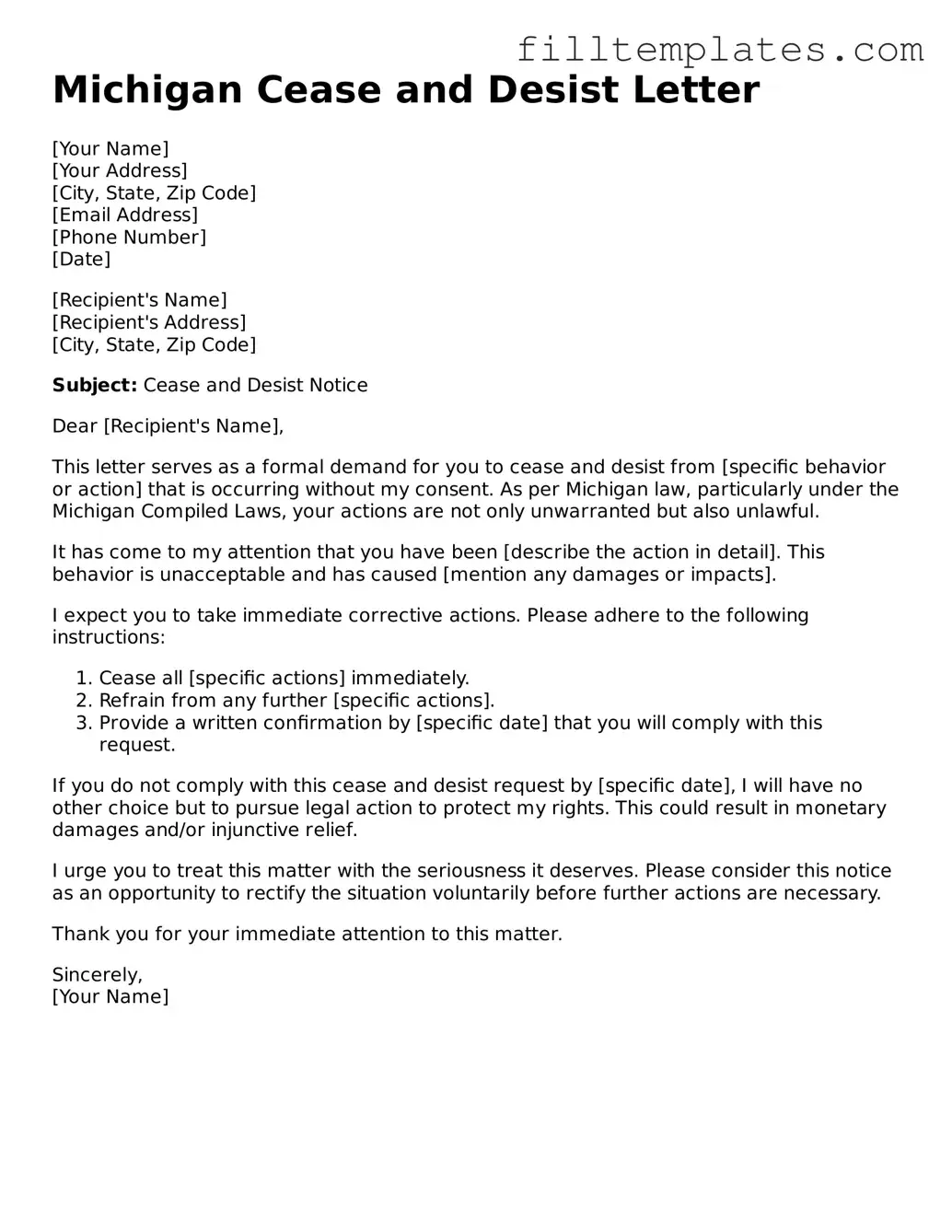Michigan Cease and Desist Letter
[Your Name]
[Your Address]
[City, State, Zip Code]
[Email Address]
[Phone Number]
[Date]
[Recipient's Name]
[Recipient's Address]
[City, State, Zip Code]
Subject: Cease and Desist Notice
Dear [Recipient's Name],
This letter serves as a formal demand for you to cease and desist from [specific behavior or action] that is occurring without my consent. As per Michigan law, particularly under the Michigan Compiled Laws, your actions are not only unwarranted but also unlawful.
It has come to my attention that you have been [describe the action in detail]. This behavior is unacceptable and has caused [mention any damages or impacts].
I expect you to take immediate corrective actions. Please adhere to the following instructions:
- Cease all [specific actions] immediately.
- Refrain from any further [specific actions].
- Provide a written confirmation by [specific date] that you will comply with this request.
If you do not comply with this cease and desist request by [specific date], I will have no other choice but to pursue legal action to protect my rights. This could result in monetary damages and/or injunctive relief.
I urge you to treat this matter with the seriousness it deserves. Please consider this notice as an opportunity to rectify the situation voluntarily before further actions are necessary.
Thank you for your immediate attention to this matter.
Sincerely,
[Your Name]
